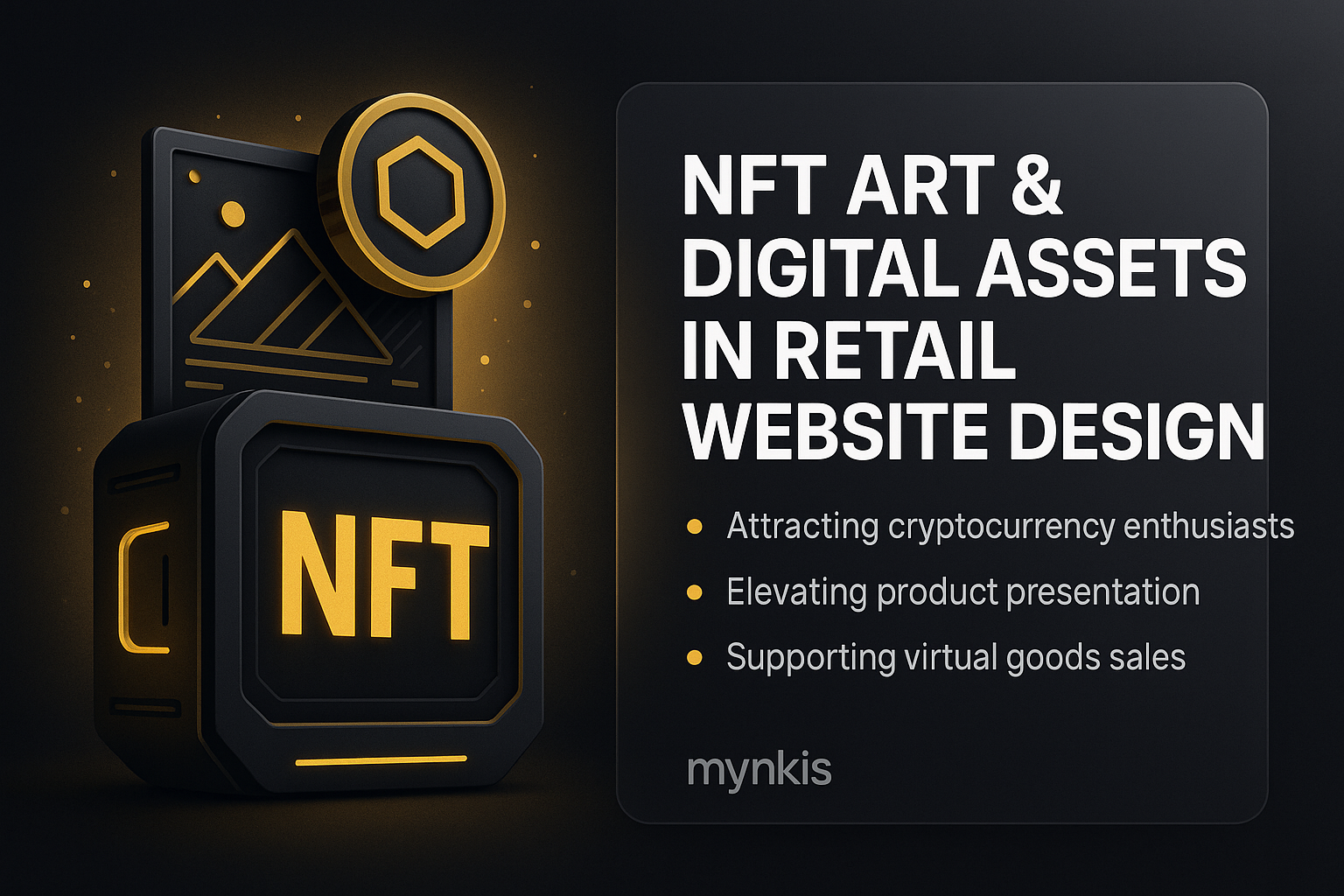Schedule a Demo
In my work with retail clients aiming to transform their e-commerce presence, I've discovered an exciting trend that can't be ignored: the integration of NFT art and digital assets into online stores. This isn't just a passing fad; it's a digital renaissance that could redefine how brands interact with customers on a global scale. From customizable digital galleries to exclusive token-gated experiences, the possibilities are limitless.
Integrating NFT art into your online store can seriously upgrade the user experience. I remember working on a project where we transformed product pages into digital art galleries. Customers could view limited edition NFTs alongside the products they were browsing. This wasn't just about displaying art; it created an interactive narrative around each product, increasing engagement and time spent on the site.
The use of digital assets on your site can work wonders for your SEO efforts. By properly tagging and indexing NFT collections, we can improve a retailer's visibility in search engine results. For example, incorporating keyword-rich titles and descriptions for NFT art can help attract art and tech-savvy customers. SEO isn't just about keywords, though; it's also about providing rich, engaging content that keeps visitors coming back.
NFTs enable retailers to offer exclusive, one-of-a-kind content that can drive customer engagement like never before. I've seen stores create token-gated content where only those who own certain NFTs gain access to special promotions, virtual events, or early product launches. It's an innovative way to reward loyal customers and create buzz around your brand.
As retailers adopt NFT technology, integrating digital wallets into the shopping experience becomes essential. When I worked with clients on this, we focused on making the process seamless. Customers could use their digital wallets to purchase NFTs or link them directly to their profiles, enabling smoother transactions and enhancing the shopping experience.
Blockchain technology, which underpins NFTs, offers significant security advantages for retailers. In my projects, using blockchain allowed us to verify the authenticity and ownership of digital assets, reducing the risk of fraud. This assurance is crucial for customers navigating the online world, where trust can be scarce.
NFTs have opened up exciting avenues for brand partnerships. I've been involved in projects where retailers collaborated with digital artists to create exclusive collections. These partnerships not only expand a brand's reach but also create a narrative around the products, fostering a deeper connection with customers.
Virtual events are another area where NFTs shine. I've worked on several campaigns where retailers used NFTs as tickets to exclusive online events. Whether it's a product launch, an art exhibition, or a fashion show, these events create memorable experiences that can strengthen customer loyalty and drive sales.
When we talk about customer loyalty programs, NFTs offer a fresh take. In my experience, retailers can use NFTs to provide customers with digital collectibles that double as loyalty rewards. These NFTs could represent exclusive discounts, special access to new products, or even voting rights on future offerings, turning casual shoppers into loyal brand ambassadors.
Another novel approach I've explored is integrating NFT art into physical product packaging. By including QR codes on the packaging that link to digital art pieces, retailers can blend the physical and digital worlds, creating a unique unboxing experience. This can enhance the perceived value of the product and make the purchase even more memorable for the customer.
Education is key to adopting NFT technology in retail. As I've worked with numerous clients on this, I've emphasized the importance of clearly explaining what NFTs are and how they benefit the customer. Webinars, tutorials, and on-site information hubs can help demystify the technology and increase its adoption rate among your audience.
Any discussion on NFT integration must address legal and regulatory considerations. From my experience, retailers need to stay informed about copyright, intellectual property rights, and the evolving legal landscape around digital assets. Seeking guidance from legal professionals familiar with blockchain technology is crucial to ensure compliance.
Looking ahead, the landscape of NFT art and digital assets in e-commerce is poised for further evolution. I believe we'll see more retailers embracing these technologies to offer personalized, immersive shopping experiences. Staying on the cutting edge by experimenting with emerging technologies like augmented reality and artificial intelligence alongside NFTs will keep brands relevant and exciting.
Of course, integrating NFTs into retail comes with its challenges. Not all customers may be ready to dive into the world of digital assets, and there's still a learning curve for many. Balancing the excitement of new technology with user accessibility and transparency will be key. As I've seen in projects, providing multiple entry points and ensuring a smooth user experience can help bridge these gaps.
Finally, building a sustainable strategy around NFTs and digital assets requires a thoughtful approach. From what I've observed, it's about more than just jumping on a trend; it's about how these technologies can enhance your brand long-term. Continuous monitoring of customer feedback, adapting to technological advances, and maintaining clear communication will be essential for a successful integration.
